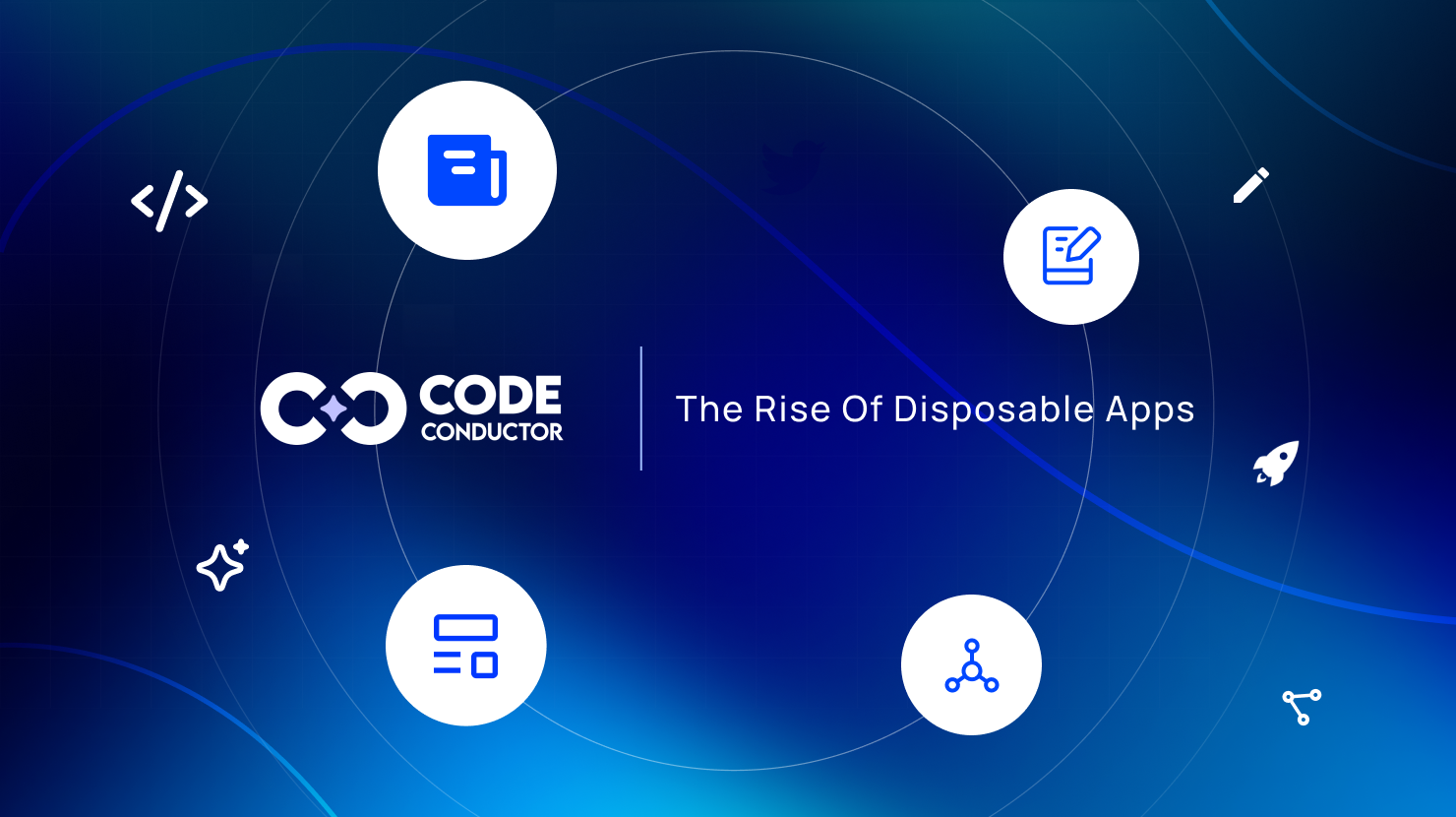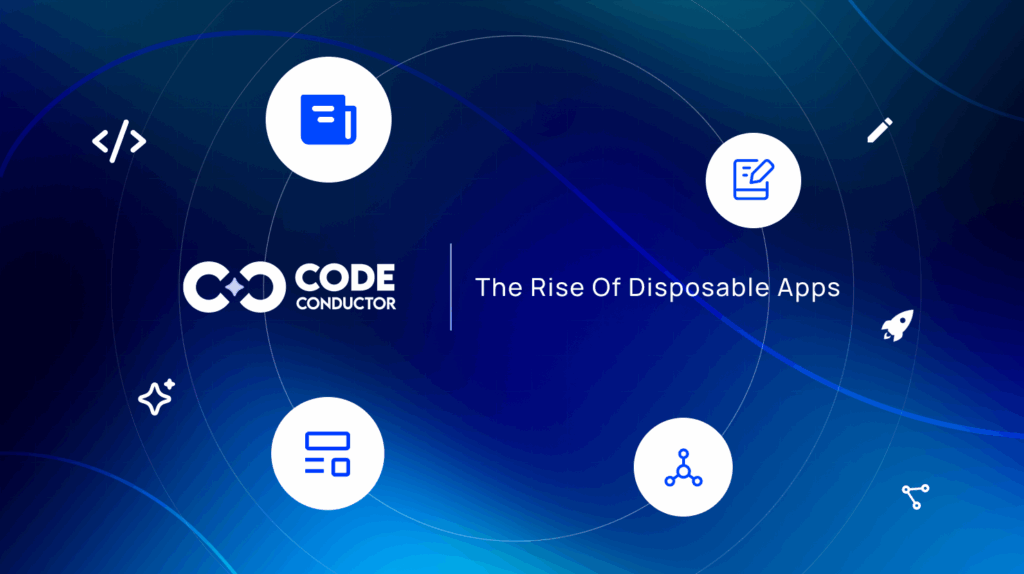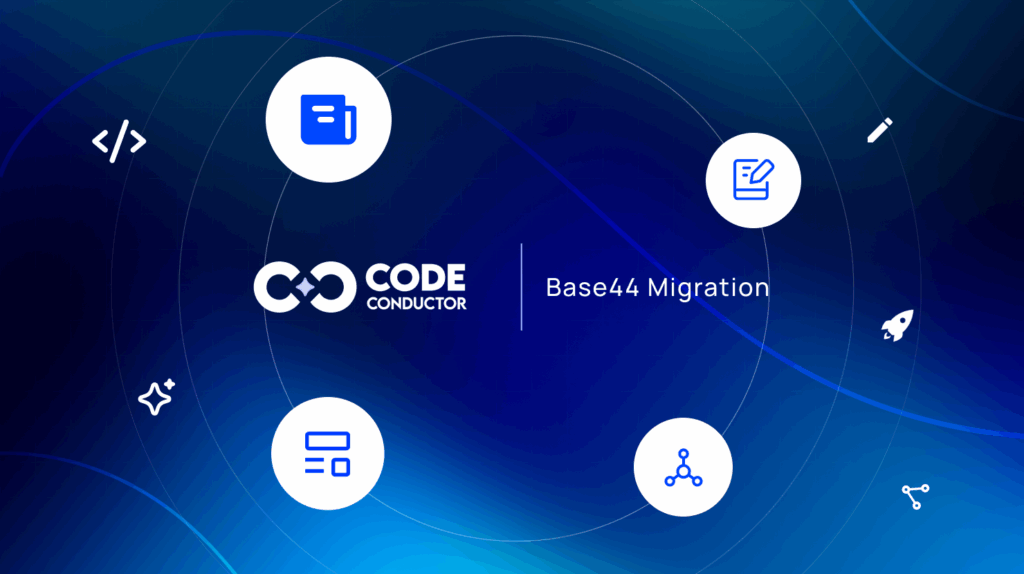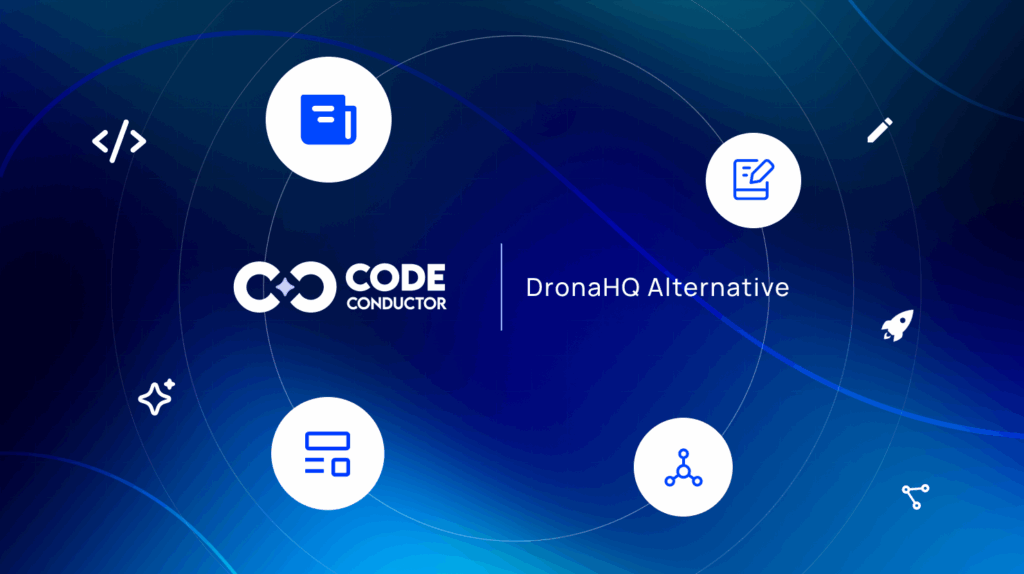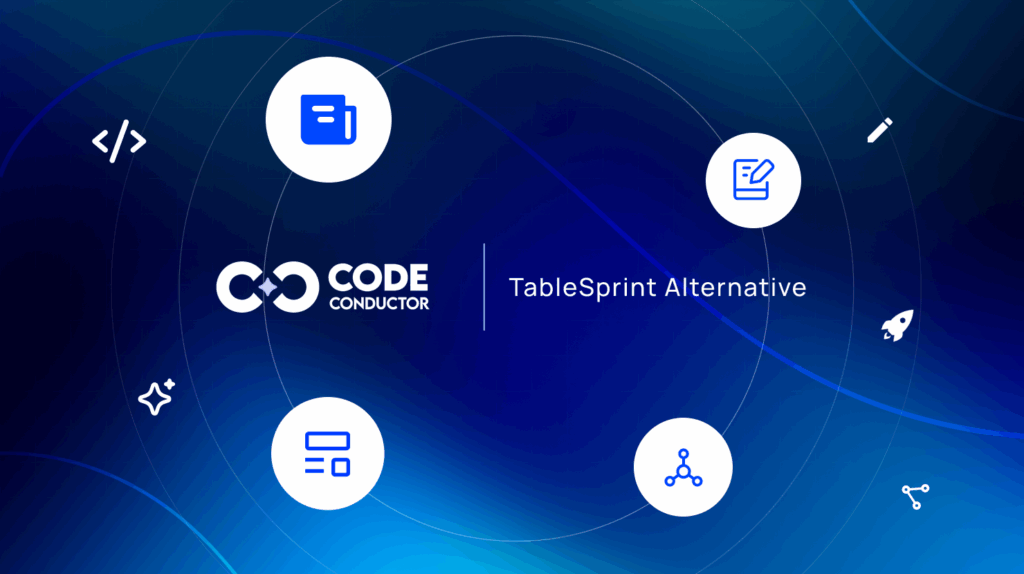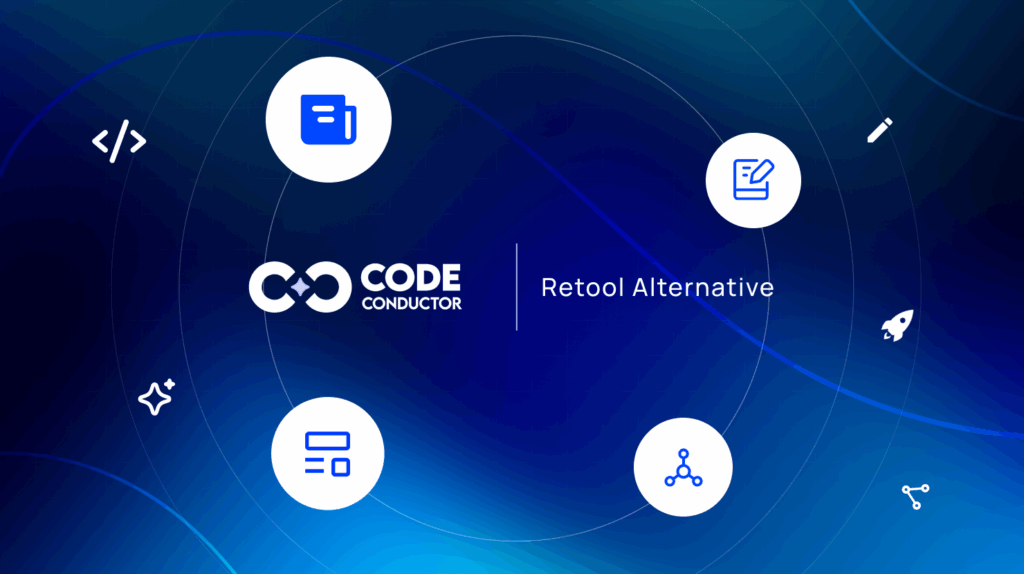What if building a software application was as fast and temporary as sending a message, and just as easy to discard when its job was done?
Welcome to the age of disposable apps, lightweight, single‑purpose software tools that are built quickly, serve a very specific purpose, and are meant to be retired once their task is complete. Powered by AI code generation, no‑code/low‑code platforms, and serverless infrastructure, these apps are transforming how teams build, deploy, and think about software.
Unlike traditional applications that aim for longevity and ongoing maintenance, disposable apps embrace short software lifecycles, ephemeral architecture, and on‑demand digital experiences.
In fact, recent data shows that over 50% of installed apps are uninstalled within 30 days. (Source) And retention rates are razor‑thin, average Day 30 retention for Android apps is around 2.1%, while iOS sits roughly at 3.7%.(Source)
These trends underscore why the concept of a single‑purpose, short‑lived app is gaining traction: if users are already abandoning apps so quickly, building with the intention of brevity and precision may offer a strategic advantage. As cloud platforms, low‑code frameworks, and generative AI technologies mature, disposable apps are becoming both accessible and viable for businesses of all sizes.
In this blog, we’ll explore:
- What Disposable Apps are?
- How Disposable Apps Built?
- Where Disposable Apps are Used?
- How to Choose the Right Disposable Apps Tools, and
- Why Disposable Apps Reshaping the Software Development and Deployment Landscape?
Let’s begin by defining exactly what a disposable app is and how it differs from other software models.
In This Post
- What Exactly is a Disposable App & How Does It Differ From Other Software Models?
- What Makes Disposable Apps Different From Other Models?
- How are Disposable Apps Built & What Technologies Make Them Possible?
- Where are Disposable Apps Being Used Today & Which Industries Benefit Most?
- How do Disposable Apps Generate Revenue & Which Monetization Models Actually Work?
- What are the Best Tools to Build a Disposable App Quickly?
- What’s the Right Roadmap to Plan, Build & Retire a Disposable App Successfully?
- What’s Next for Disposable Software & How Will It Shape the Future of Development?
- Conclusion: Why Disposable Apps are a Smarter Way to Build?
- FAQs About Disposable App Development
- What is the difference between disposable apps and progressive web apps (PWAs)?
- Can disposable apps work offline?
- Are disposable apps secure for handling personal data?
- How long should a disposable app stay live before being retired?
- What programming languages are best for building disposable apps?
- Can disposable apps integrate with existing enterprise systems?
- Do disposable apps support real-time data processing?
- What are the limitations of using disposable apps for business?
- How can I measure the ROI of a disposable app?
- Are disposable apps suitable for regulated industries?
What Exactly is a Disposable App & How Does It Differ From Other Software Models?
A disposable app is a quick, single-use application that solves one task and then goes away. It’s not meant to last. It’s like a digital one-time tool. It’s different from MVPs or microservices because it doesn’t need updates or long-term support.
These apps are created for temporary use cases such as:
- A two-week promotional campaign,
- A seasonal booking portal,
- An internal tool for onboarding, or
- A one-time event check-in system.
They’re fast to build, easy to deploy, and don’t require long-term maintenance.
What Makes Disposable Apps Different From Other Models?
| App Type | Purpose | Lifecycle | Maintenance | Example |
|---|---|---|---|---|
| Disposable App | Specific task | Short-term | Minimal to none | Event registration |
| MVP (Minimum Viable Product) | Product validation | Mid-term | Evolving | Early version of SaaS |
| Microservice | Modular service | Long-term | Yes | Billing API |
| Traditional App | Full product | Long-term | Ongoing | Banking app |
While MVPs and microservices are about scalability and iteration, disposable apps are about immediacy and purpose. You’re not building for the future, you’re solving a need right now.
Thanks to AI-powered code generation, no-code builders, and serverless deployment platforms, disposable apps can be built in hours instead of weeks, often without writing a single line of traditional code.
How are Disposable Apps Built & What Technologies Make Them Possible?
Disposable apps are built using no-code tools, AI app makers, and serverless platforms. These let you make apps fast, with no need to manage servers. Some tools, like CodeConductor AI, help create these apps just by describing what you want.
Here’s how they’re typically built:
1. No-Code and Low-Code Platforms
No-Code/Low-Code platforms allow users to design and build functional applications using visual interfaces, templates, and logic flows without writing code.
They’re perfect for quickly assembling short-term apps for specific campaigns, events, or internal tools.
2. AI-Driven App Generation
Generative AI has made it possible to describe what an app should do and have the system create it automatically.
This reduces build time from days to hours and empowers non-developers to participate in app creation.
3. Serverless and Ephemeral Infrastructure
Instead of managing servers or long-running processes, disposable apps often live on serverless platforms. These environments automatically scale resources up or down and only run when needed, perfect for temporary use cases where the app doesn’t need to exist for long term.
4. Automation and Lifecycle Management
Since disposable apps are short-lived by design, they benefit from automated deployment, teardown, and version control systems.
Whether it’s triggered by a timeline, event, or user action, these automation layers ensure the app lives just long enough to deliver its intended value and nothing more.
Together, these technologies form a lean, agile way to create software, one that breaks from the traditional mindset of “build once, support forever.”
So, where exactly are disposable apps making an impact? Let’s explore that next.
Where are Disposable Apps Being Used Today & Which Industries Benefit Most?
Disposable apps are already used in healthcare, retail, logistics, education, and even inside businesses. They help with short tasks like vaccine signups, flash sales, delivery updates, or quick surveys, and they’re turned off once done.
Let’s look at where disposable apps are gaining momentum:
-
Healthcare
Hospitals and clinics use disposable apps for things like appointment pre-screening, symptom checkers during outbreaks, or pop-up vaccination registrations. These apps are built fast, often run during a specific campaign, and are retired afterward.
-
Retail & E-Commerce
Retail brands use short-term apps to support flash sales, seasonal promotions, or temporary coupon codes. These disposable microsites or mobile tools help boost engagement during specific time windows like Black Friday or a product launch.
-
Logistics & Delivery
Logistics teams rely on disposable dashboards to track inventory, manage last-mile delivery updates, or onboard temporary drivers during peak seasons. These tools can be spun up fast and turned off when the workload normalizes.
-
Education & Events
In schools or events, disposable apps support one-time learning modules, registration systems, feedback forms, or attendance tracking. They’re especially useful for remote workshops or hybrid events where quick digital tools are needed.
-
Internal Business Operations
Companies use disposable apps internally for onboarding flows, temporary surveys, performance reviews, or one-time project dashboards – saving time without cluttering the long-term app ecosystem.
These examples show how speed, simplicity, and specificity make disposable apps incredibly useful, especially in temporary, seasonal, or fast-changing situations.
How do Disposable Apps Generate Revenue & Which Monetization Models Actually Work?
You can make money with disposable apps by charging for one-time tasks, getting sponsors, collecting leads, or offering small paid add-ons.
Here are some proven monetization strategies that fit disposable app lifecycles:
1. Event-Based or Seasonal Pricing
Charge users for time-boxed access during a specific campaign or event.
Example: A $9.99 registration app for a virtual summit that disappears after the event.
2. Sponsor-Funded Utility Apps
Offer free utility apps (like checklists, calculators, or budget planners) funded by sponsors seeking exposure.
Example: A home-buying budget calculator branded by a mortgage provider.
3. Pay-Per-Use or Micro-Transactions
Allow users to complete one task for a small fee such as document signing, image processing, or submission validation.
Example: $1 to instantly validate a shipping address or PDF signature.
4. Limited Access Upsells
Give away basic functionality for free, then charge to unlock “just enough” value for the user’s single task.
Example: Free photo cleanup app that charges $2 for high-res export.
5. Lead Capture for Service Businesses
Use the disposable app as a front-end for generating leads, giving value upfront in exchange for contact info.
Example: Free “AI website grader” that offers insights and then prompts users to book a call.
6. Internal Efficiency Monetization
While not user-facing, businesses can “monetize” disposable apps by using them internally to save time, reduce manual work, or avoid software license costs.
Example: An HR survey app that replaces a costly third-party solution for one-off team feedback.
By aligning the app’s intent with a specific monetizable outcome, businesses can turn even the shortest-lived software into a revenue-generating asset, or at the very least, a high-ROI utility.
What are the Best Tools to Build a Disposable App Quickly?
Top tools to build disposable apps include CodeConductor AI, Bubble, Replit AI, Vercel, and Zapier. These let you create and run apps quickly, even without any coding skills.
| Tool | Type | Why It’s Ideal for Disposable Apps |
|---|---|---|
| CodeConductor AI | AI-Powered App Generator | Automatically creates short-lifecycle apps based on user goals. Ideal for teams who need fast, functional software with minimal manual setup. |
| Bubble | No-Code Builder | Drag-and-drop app development with workflows and UI controls. Great for rapid prototyping or single-purpose microsites. |
| Replit AI | AI-Powered IDE | Write and deploy code with AI help in real-time. Perfect for devs who want quick, small apps without traditional setup. |
| Vercel | Serverless Deployment Platform | Instantly hosts front-end apps with built-in scaling and performance. Great for disposable apps with short traffic spikes. |
| Zapier | Automation & Integration Tool | Connects apps and automates backend logic (emails, notifications, updates). Great for disposable workflows without engineering. |
What’s the Right Roadmap to Plan, Build & Retire a Disposable App Successfully?
To build a disposable app, start with a clear problem. Set a simple goal. Use AI tools like CodeConductor to create it fast. Launch it, gather results, and shut it down when it’s done – Clean and simple.
Here’s a simple 6-step roadmap to plan, build, and sunset a disposable app effectively:
| Step | Action | Why It Matters |
|---|---|---|
| 1. Identify a specific, time-bound need | Choose a focused use case like an event check-in, feedback form, or internal workflow | Disposable apps work best when tied to a clear task with an expiration date. |
| 2. Define success in measurable terms | Set a goal: 200 sign-ups, 100 completions, or 80% response rate | Having a simple KPI makes it easier to track value and justify building the app. |
| 3. Choose your tools wisely | Use tools like CodeConductor AI to generate the app quickly, with minimal input | Tools should support rapid launch, limited scope, and easy disposal. |
| 4. Deploy fast and test with real users | Launch in hours, not weeks, test live, iterate only if needed | Speed is the value. Don’t overbuild. Gather just enough data to validate use. |
| 5. Capture outcomes, automate what you can | Export data, trigger next steps, or send reports using workflows | Make sure the app “hands off” its output without needing follow-up dev work. |
| 6. Decommission responsibly | Shut it down, archive results, remove access points | This keeps systems clean, avoids security risks, and closes the lifecycle intentionally. |
This approach ensures the app solves the right problem, delivers value fast, and doesn’t leave behind unnecessary tech debt or clutter.
What’s Next for Disposable Software & How Will It Shape the Future of Development?
The future of disposable apps includes AI-made microtools, pay-per-use services, and apps that delete themselves. You’ll soon be able to tell an AI to build and shut down apps, all in one go.
Here’s where this space is heading:
1. AI-Generated Microtools at Scale
With the rise of platforms like CodeConductor AI, we’re moving toward a world where you simply describe your problem, and the software generates itself. Soon, teams may build dozens of micro-apps per month, each solving a single task, with zero technical bottlenecks.
2. Ephemeral SaaS
Instead of traditional subscriptions, expect a rise in SaaS platforms that deliver value in micro-bursts — used once, paid once, then gone. Think “SaaS by the slice.”
3. API-Led Composability
Disposable apps will increasingly rely on external services, plugging into data sources, payment processors, and logic engines, rather than building everything from scratch.
4. Agent-Driven Deployment
Generative AI agents will soon not only build apps, but deploy, monitor, and sunset them. Imagine telling your assistant: “Spin up a customer feedback app for this week’s webinar.” Done in minutes.
5. Built-In Deletion Logic
As privacy concerns grow, future disposable apps will include self-destruct features, deleting themselves after a time limit or event trigger. Goodbye manual cleanup.
In short, disposable software is more than a shortcut, it’s a new mindset. One that values agility, efficiency, and minimalism over permanence. And it’s paving the way for AI-driven, on-demand experiences that adapt as fast as your business does.
Conclusion: Why Disposable Apps are a Smarter Way to Build?
The future of software isn’t always bigger, sometimes, it’s just faster, sharper, and more purposeful.
Disposable apps represent a smarter, leaner approach to solving real problems, right when they matter, and not a moment longer. They aren’t built to last. They’re built to work, and then get out of the way.
In a world where speed is strategy, and agility beats size, the ability to spin up focused, functional tools on demand isn’t just convenient, it’s a competitive advantage.
Ready to Build Smarter, Not Bigger?
If you’re ready to stop overbuilding and start delivering exactly what your team, users, or customers need, right now, it’s time to try CodeConductor.
✅ Instantly generate disposable apps
✅ Customize for your use case
✅ Launch fast, retire clean, repeat as needed
Build Your First Disposable App with CodeConductor
FAQs About Disposable App Development
What is the difference between disposable apps and progressive web apps (PWAs)?
Disposable apps are built for short-term use, while PWAs are designed for long-term engagement across platforms.
Can disposable apps work offline?
Most disposable apps require an online connection, but offline access can be added if the use case demands it.
Are disposable apps secure for handling personal data?
Disposable apps can be secure if built with encryption, limited data collection, and proper teardown processes.
How long should a disposable app stay live before being retired?
A disposable app should remain active only for the duration of its specific task or event, typically days to weeks.
What programming languages are best for building disposable apps?
JavaScript, Python, and TypeScript are commonly used, but many no-code platforms eliminate the need for manual coding.
Can disposable apps integrate with existing enterprise systems?
Yes, disposable apps can integrate via APIs, webhooks, and third-party services to sync with CRM, ERP, or HR systems.
Do disposable apps support real-time data processing?
Some disposable apps can process data in real time using cloud functions or serverless backends.
What are the limitations of using disposable apps for business?
Limitations include short lifespans, lack of scalability, and minimal long-term analytics.
How can I measure the ROI of a disposable app?
Track time saved, conversions achieved, or leads captured during the app’s lifecycle to evaluate ROI.
Are disposable apps suitable for regulated industries?
Only if built with data retention, audit logging, and compliance in mind.

Founder CodeConductor

